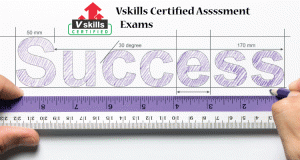Any organization whether small, medium or big has its own management structure which determines relationships between the different activities and the employees by subdividing and assigning roles, responsibilities, and authority to carry out different tasks.
The term”Management” denotes different meaning to different people. While some ascribe it to the people holding senior positions in an organization, others compare it with man management skill. Management in all business and human organization activity is considered as an act of getting people together to accomplish desired goals and objectives. According to Mary Parker Follett, Management is “The art of getting things done through people”. Management functions on a three tier hierarchy, top level, medium level and lower level management. While the former consists of CEO, CFO, who establish the goals of the company, it is the lower level of management which carries out the goals through the use of employees. The middle level management only use rank and file to complete the tasks assigned to carry out the goals of upper management. Power has been delegated to the lowest level employees to make decisions, solve problems and do what is necessary to keep employees satisfaction up.
Coordination of the efforts of people is considered as a function of management in businesses and organization’s to accomplish goals and objectives by using available resources efficiently and effectively. In other terms, management involves in interlocking functions of creating corporate policies as well as organizing,planning,controlling, and directing an organization’s resources in order to achieve the objectives of that policy.The size of management differs from organization to organization. It can range from one person in a small firm to hundreds and thousands of managers in multinational companies. While the term “Management”, as a collective word describing the managers of an organization, a corporation. But historically, the use of the term often contrasted with the term “labour”, referring to those being managed.
But in the present era, the concept of management is defined in the wide areas and its scope is broaden.The concept and its usages are not constrained.Rightly speaking, Management on the whole is the process of planning, organizing, staffing, leading and controlling.
It is human resource department in a company which is responsible for creating,implementing and overseeing policies governing employee behaviour and the behaviour of the company toward its employees. HR are the people who work for the organization whereas HRM is really employee management with an emphasis on those employees as assets of business. Thus, the HR Department considered as backbone of a company and serves as the functional centre of an organization. It operates in both the forefront and behind the scenes as it’s functions requires intimately involved in every aspect of the business.
In this context, employees are sometimes referred to as human capital. Like other business assets, the goal is to make effective use of employees, reducing risk and maintaining return on investment(ROI).
Management is defined as the process of reaching organizational goals by working with people ,through people and other organizational resources. Management consists of the following 3 characteristics:
• It is considered as the process or series of continuing and related activities.
• It involves and ensures to accomplish organizational goals.
• It works with the people,through the people and with other organizational resources to reach goals.
MANAGEMENT FUNCTIONS:
The 5 basic management functions are described below that make up the management process:
• PLANNING
• ORGANIZING
• STAFFING
• DIRECTING
• CONTROLLING
PLANNING:
• Planning is a management process which is concerned with defining goals and mission for a company to achieve its objectives.
• Planning activity focuses on attaining organizational goals. Managers should outline what organizations need in order to be successful. Planning is concerned with the success of the organization in the short term as well as in the long term.
ORGANIZING:
• Organizing is the function of management which follows planning. Organizing is a core function of management which synchronize and combine human,physical and financial resources. These three are most important aspects to achieve the results. Therefore, organizational function helps in achievement of results which in fact is important for the functioning of a concern.
• The role of a manager is to organize functions with the identification of activities, than departmentally organizing the activities and accordingly classifying the authority in every level and coordinating between authority and responsibility.
• People within an organization are assigned with tasks that help in achieving company’s goals. Tasks are organized in such manner whereby the output of each individual is measured not only in terms of success of departments, but also towards the success of divisions, which ultimately contributes to the success of the organization.
STAFFING:
• Staffing plays a very crucial role in manning the organization’s structure through proper and effective selection, performance appraisal and development of the personnel assigned to the employers/workforce.
• Staffing tops on the agenda of management. Although in a new organization, the process of staffing comes after planning and organizing but for going organization it is a continuous process.
DIRECTING:
• Directing is a process in which the managers instruct, guide and supervise the performance of the workers to achieve set goals of the organization.Directing is said to be the heart of management process. The former management functions i.e., planning, organizing, staffing have got no importance if direction function does not take place.
• Directing initiates action and it is from where the actual work starts. It consists of human factors.
• In simple words, it can be described as a function of providing guidance to workers in doing work. In management field, Directing is said to encourage subordinates effectively and efficiently.
CONTROLLING:
• Controlling is function is the last function performed by management. It is a parameter that measures actual performance with the expected performance.
• The controlling process involves:
• Formulating standards to measure
• Measurement of actual performance
• Comparing performance with the defined standards
• Taking corrective action
• In this process, Managers analyze that whether the tasks performed have met the desired goals.
Controlling is an ongoing process.
• Management is a continuous process and is very important for any organization because it enables the organization to view its process.
To summarize, Management has no direct link with its people. Whatever may be the size of an organization(there are few exceptions),hierarchically HR is placed in a position whereby the information flows from top to bottom and bottom to top and vice-versa and thereby it plays the role of a weighing scale keeping the balance between management and employees.It is the HR professionals who not only suggests to the management how to strategically manage people as business resources but also suggests strategies for increasing employee involvement and commitment to the organization.From management perspective, HR is a part of management which is concerned with the people at work and desirable working relationships among all the members of the organization.
– Debleena Sinha




